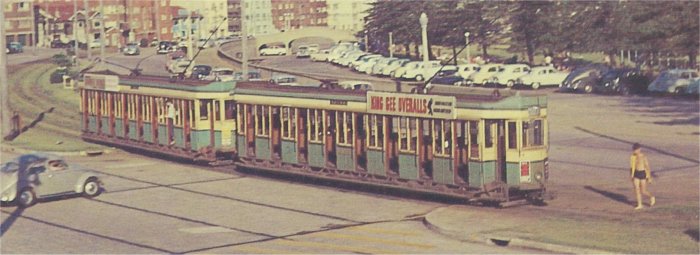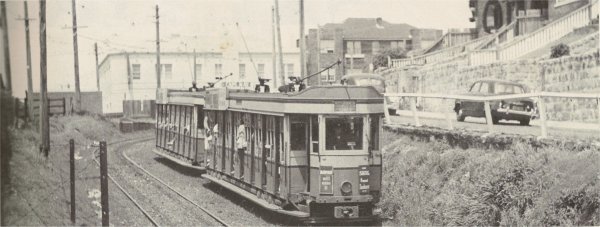

School Project
How Far Did a Bondi Tram Travel?
Fill in the figures below and then estimate the total distance travelled by a Bondi Tram in its lifetime.
| First Estimate | Second Estimate | Third Estimate | |
|
Speed of Tram
(in Kilometres per Hour or Miles per Hour) |
|||
| Hours per Day | |||
| Working Days per Week | |||
| Working Weeks per Year | |||
| Years of Service | |||
|
Total Distance Travelled
(multiply all five figures together) |

Trams at Bondi Beach. Yep, two toastrack trams coupled held far more people than a bendy bus.
|
Hints
|
|
Speed:
The average speed of Sydney traffic is way below the speed limit,
especially in the peak hour.
These days, buses spend ages waiting at traffic lights or picking up passengers.
Before 1930 Sydney did not have traffic lights at all.
A toast rack tram had 8 compartments and 8 people could get on or off at once.
Trams had conductors who collected the fares on the tram.
Hours per Day: This is the most difficult item to estimate. These days, buses routes usually run from about 5:30 am until about 11:30 pm. A bus depot is almost empty in the peak hours, but is usually about half full at other times. Buses usually park at the terminus for a few minutes before the trip starts. Days per Week: At least 5 days, but weekend services are fewer. Before about 1970 the shops closed at noon on Saturday for the weekend, and sport on Sunday was restricted. However going to the beach on a Sunday was always big. Weeks per Year: Trams had time off for repairs and routine maintenance, and major jobs like repainting. Years of Service: Normal domestic cars are recycled after about 15 years. However trains, buses and trucks are built to last and are carefully maintained and will easily last 30 to 50 years. Some of those open-top double-decker Bondi Explorer buses for tourists are actually second-hand government buses from Newcastle in England. Total Distance: If a tram ran flat chat at the speed limit, 24/7, 52 weeks a year for 50 years that would give you an upper limit. If your answer is bigger than this, you have a problem. |

Trams descending to the beach from South Bondi. The white block of flats is now the Bondi Beach YHA Youth Hostel.
Last Updated - 4th October 2017
Copyright 2010-2017. About